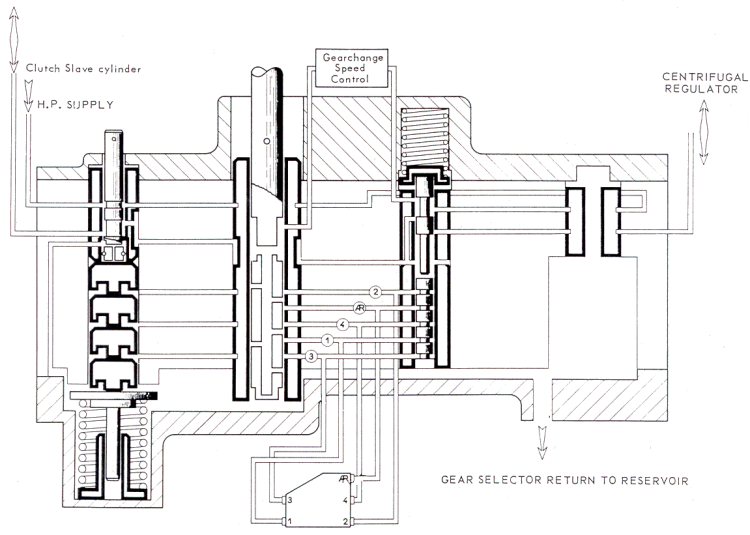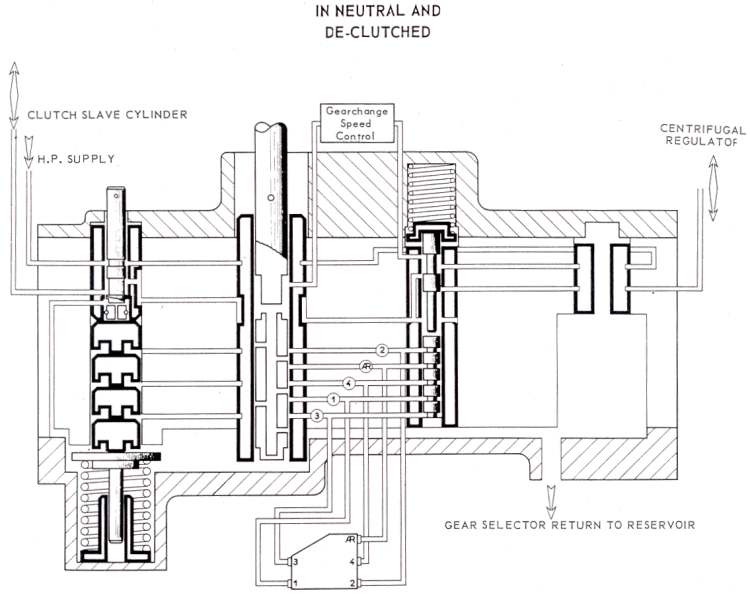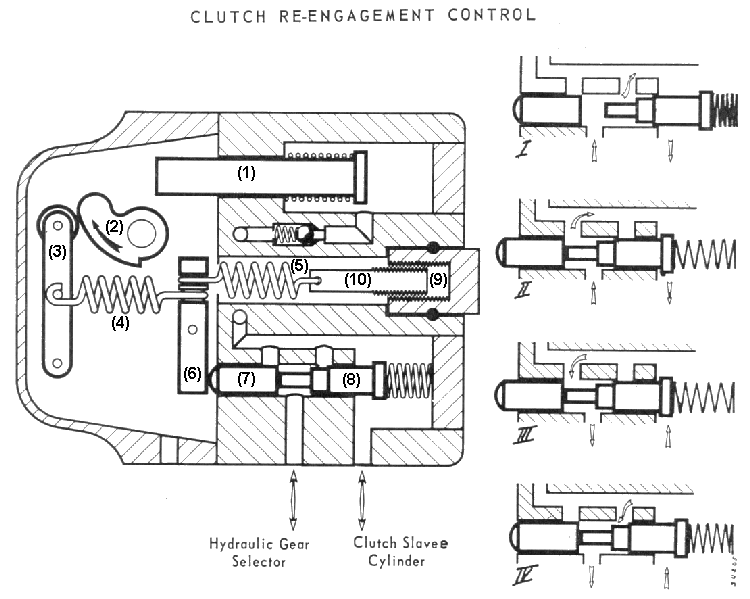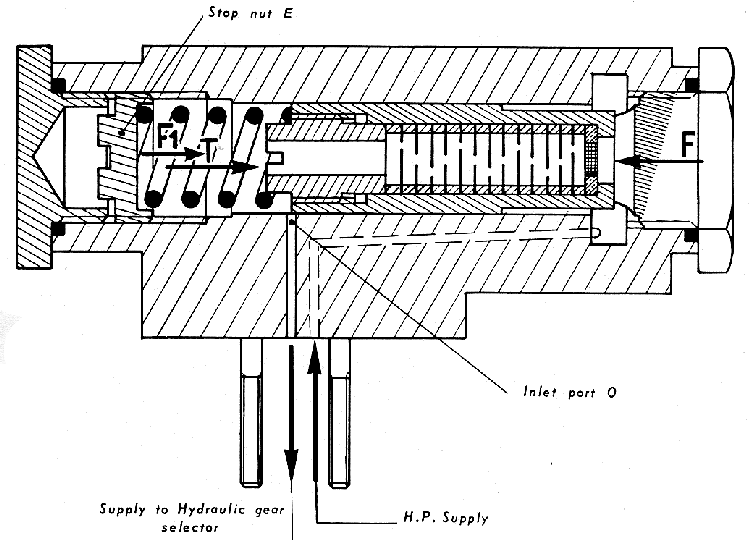| Re-engagement :
Principle :
It is
necessary to have a rapid first stage of engagement to the point where
t;he clutch begins to drag and a slower second stage to avoid sudden
engagement. To achieve this the return of fluid must be free at first
and slowed down thereafter.
Operation :
The pipe
connected to the hydraulic gear selector is connected to the return to
the reservoir by the gear selector.
There is a rapid drop of pressure (Inset III), until the
slide-valve obstructs the return port ; this occurs when the fluid
pressure on one side of the slide-valve becomes less than the effect
of the spring on the return lever on the other side.
This is the
first phase, or rapid phase of re-engagement. In the centre portion of
the bypass valve is the reduced diameter described in the text, this
is between the outlet port and the return to gear selector ; the
pressure continues to drop by way of the outlet, restricted by the
bypass valve, but slowly now.
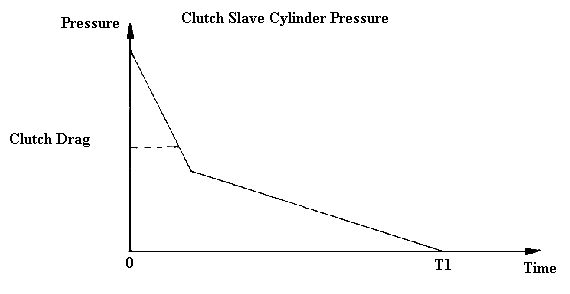
However it is necessary to vary the speed of clutch engagement
according to the driver's wishes. To achieve this the phase-change
pressure is altered. By reducing this pressure the rapid-drop phase is
lengthened which results in the overall time of engagement being
reduced.
The limits of this variation are : clutch slip in one sense and
jerky engagement in the other.
When driving, this variation is obtained by the rotation of the cam
which alters the spring tension in the CRC.
Eg : Under acceleration the pressure on the slide-valve decreases
so the overall time of re-engagement decreases, (T2).
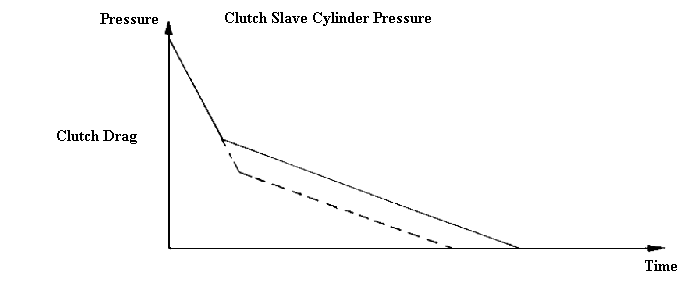
There is a
fine static adjustment of the spring in the CRC by means of a second
spring, the tension of which is variable by a screw and nut system.
(By tightening the time of re-engagement is reduced).
Throttle
closing Piston :
So that the engine speed is not excessive at the point of clutch
re-engagement, it is limited during declutching. Mainly this permits
the driver to keep the acceleration applied when changing down without
affecting the smoothness of clutch engagement.
While the
pressure is rising in the slave cylinder, the fluid pushes on the
throttle-closing piston. The entry of fluid to the piston is slowed by
making it pass a ball with 3 grooves on its seating, the fluid passing
by the grooves. The restriction of the fluid is necessary to avoid
"hammering" in the hydraulic circuit, and above all to
prevent the throttle from being closed too quickly.
The piston
moves out and limits the movement of the cam connected to the throttle
spindle. The engine speed is limited while the clutch is out. Upon
re-engagement, the pressure drops at the same speed as in the clutch
slave cylinder, and the piston returns under the influence of its
return spring.
|

